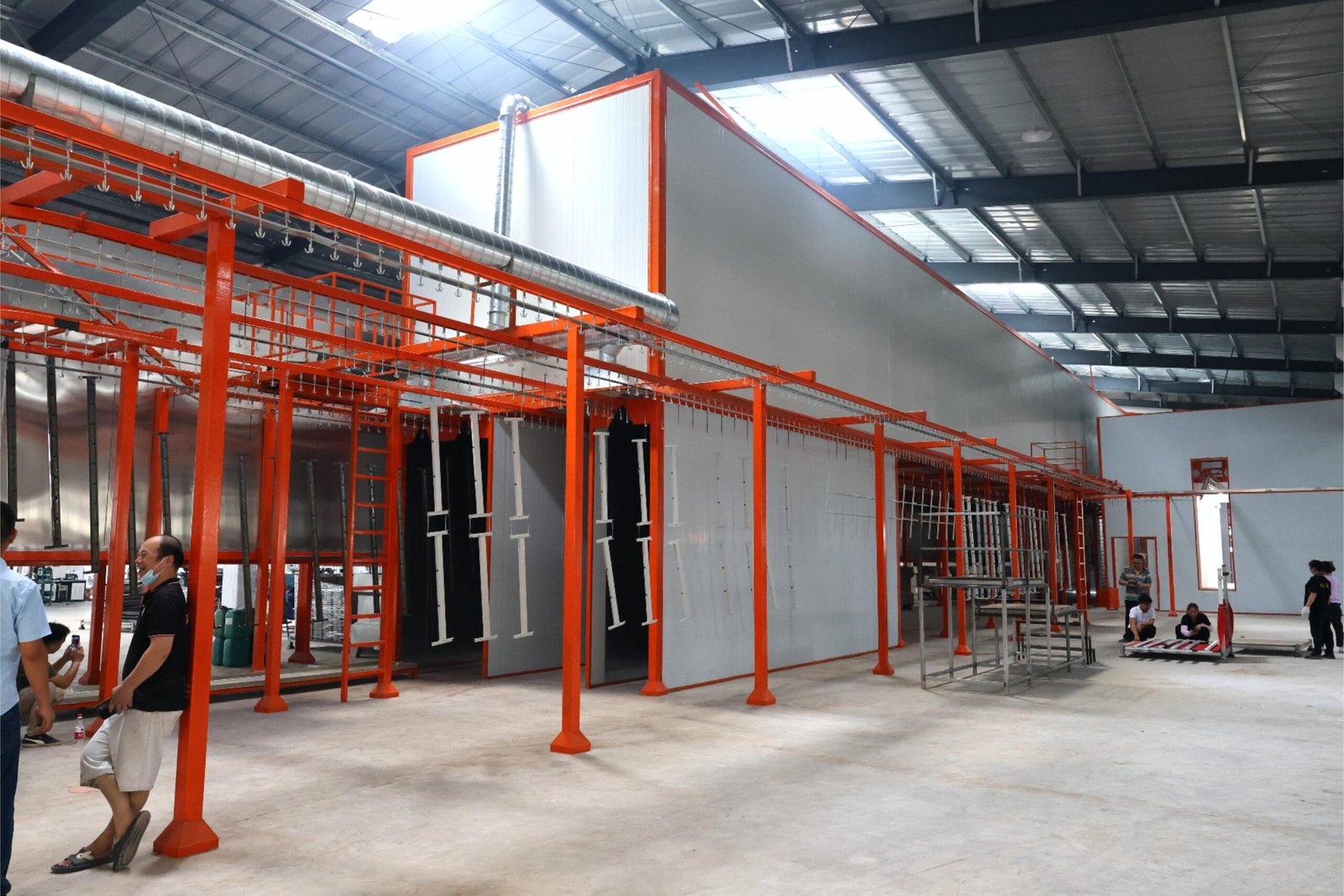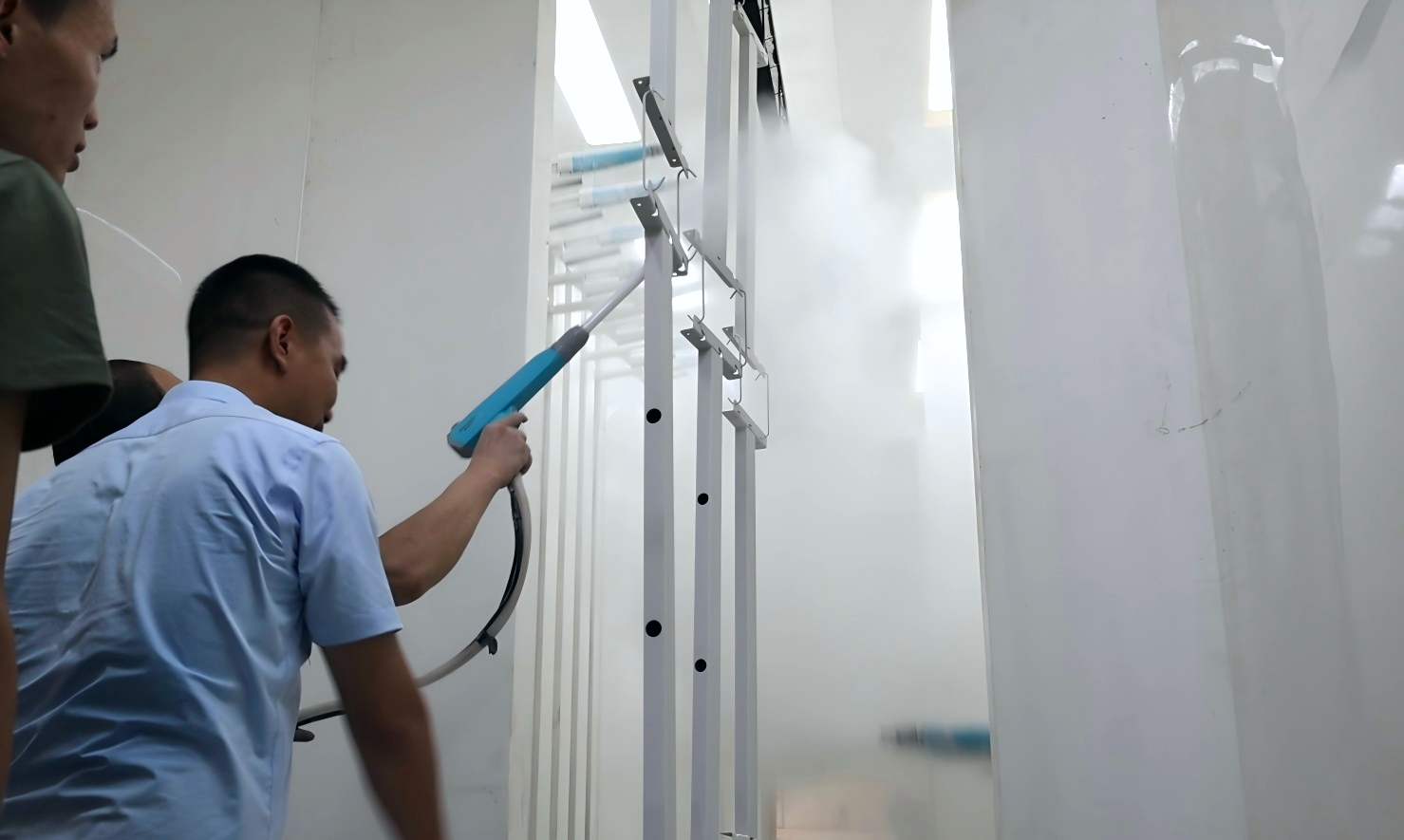What Equipment is Necessary for a Powder Coating Line?

Powder coating systems can fail from the start—if you don’t pick the right equipment.
That’s why I’ve created this full guide to walk through each component of a powder coating line.
You need a powder coating line that includes pre-treatment, drying, powder spray, recovery, curing, conveying, and safety systems. Without these, your coating quality, efficiency, and environmental performance will suffer.
If you’re building or upgrading your coating line, keep reading. I’ll walk through every part you need and how it all works together.
What does a powder coating pre-treatment system include?

Even the best powder coating won't stick to dirt or oil.
Poor surface prep can ruin finish quality, leading to adhesion failure and corrosion.
Pre-treatment systems clean and prepare parts before coating. They include degreasing, rinsing, phosphating, and drying equipment. This ensures maximum powder adhesion.
Pre-treatment lines can include dip tanks or spray systems depending on your setup. In our shop, we use a multistage spray washer with a degreasing solution followed by a phosphating stage. This dramatically increases coating lifespan.
Types of Pre-treatment Equipment
| Type | Use Case | Advantages |
|---|---|---|
| Dip Tanks | Small or batch processes | Lower cost, easy to set up |
| Spray Washers | High-volume lines | Consistent cleaning, automated |
| Ultrasonic Tanks | Delicate/complex parts | Best for internal geometries |
Each stage must be carefully controlled—especially the rinse and dry steps. Residual chemicals or moisture will interfere with the powder’s electrostatic bonding.
Why is a drying oven important after pre-treatment?
Moisture ruins coating adhesion.
Even tiny water droplets left on parts can cause blistering and peeling.
A drying oven removes all moisture after washing. It ensures the surface is clean, dry, and ready to accept powder coating.
We use both batch and continuous drying ovens, depending on project size. In high-throughput operations, continuous conveyor ovens are more efficient.
Drying Oven Features
- Temperature range: 60–120°C
- Uniform airflow to avoid hotspots
- Fast warm-up and energy-efficient insulation
If you skip drying or underheat the parts, powder won’t stick—and the whole process may need repeating.
What types of powder spray booths are available?
Overspray clouds, inconsistent color, and operator exposure—it’s what happens without a proper spray booth.
And cleaning between color changes? A nightmare without the right system.
Powder booths contain overspray and create a clean environment for application. Choose between manual, automatic, and hybrid booths depending on production volume.
At Ketu, we offer two main designs: backpack-type booths for frequent color changes, and cyclone booths for heavy-duty use.
Spray Booth Comparison
| Type | Best For | Benefits |
|---|---|---|
| Backpack Booth | Small shops, frequent colors | Fast color change, compact, low cost |
| Cyclone Booth | High-volume production | High recovery rate, consistent air flow |
| Enclosed Cabin | Custom setups | Maximum containment and filtration |
Some booths also feature integrated powder recovery (more on this below), which reduces cost and waste.
What equipment applies the powder coating?

A poor gun setup leads to thick spots, uneven coverage, and wasted powder.
You need the right tool for the job.
Electrostatic spray guns are the most common powder application tool. They use high voltage to attract powder to grounded metal parts.
We use Ketu electrostatic guns in our lines—set at 60–80 kV depending on the shape and grounding of parts.
Application Types
- Electrostatic Spray Gun: Versatile, efficient, suitable for most parts.
- Tribo Gun: Uses friction charging—ideal for specific powder types.
- Fluidized Bed: Used for coating thick or internal parts by dipping.
Tip: Always test spray settings on a sample panel. Powder output, voltage, and air pressure all affect your finish.
What is a powder recovery system and why do you need it?
Without a recovery system, up to 50% of your powder goes straight into the filter—or worse, the air.
That’s money wasted and environmental standards violated.
Powder recovery systems collect overspray, filter it, and send it back for reuse. This saves cost and reduces pollution.
We use two-stage systems. The first stage captures large particles with a cyclone separator. The second stage uses high-efficiency filters to capture fine powder.
Recovery System Features
- Cyclone or cartridge collection
- 95%+ recovery efficiency
- Automatic cleaning and dust removal
For color change, choose a system with quick-change filters or dual chambers to avoid cross-contamination.
What kind of curing oven do I need?
If your oven has cold spots, your coating will peel.
If it overheats, it discolors. Precision is non-negotiable.
Curing ovens bake the powder into a durable, finished coating. You can choose electric or gas ovens, in batch or conveyor form.
At Ketu, we supply both types. Electric ovens offer more control for small batches. Gas ovens are better for high throughput, with rapid heat-up and lower energy cost.
Oven Types
| Type | Benefit | Notes |
|---|---|---|
| Electric | Clean, precise control | Ideal for small-medium jobs |
| Gas | Fast, energy efficient | Better for long or heavy lines |
Make sure the oven has hot air circulation and a uniform temperature profile. Most powders cure between 180–220°C in 10–15 minutes.
What is the function of conveyor systems in a powder line?
Moving parts manually between stages?
That’s inefficient, dangerous, and prone to errors.
Conveyor systems move parts through the coating line automatically. This ensures process consistency and reduces labor costs.
We use overhead power-and-free systems for flexibility. This lets us stop parts in curing zones or reroute for rework.
Conveyor System Types
- Overhead monorail
- Power & free (pause & reroute possible)
- Floor-based roller or belt conveyors
Choose based on load capacity, layout, and how many processes are integrated.
Conclusion
A complete powder coating line includes surface prep, drying, spraying, recovery, curing, and handling. Every part matters—cutting corners on one will impact the whole system.
